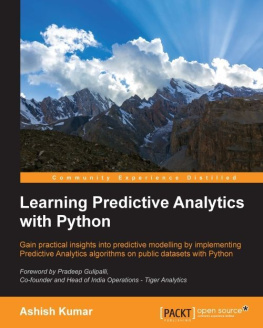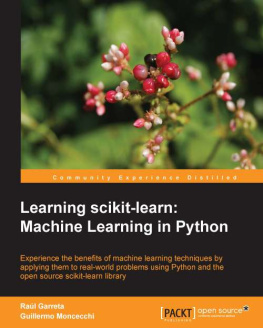
Introduction
Extracting actionable information from data is changing the fabric of modern business in ways that directly affect programmers. One way is the demand for new programming skills. Market analysts predict demand for people with advanced statistics and machine learning skills will exceed supply by 140,000 to 190,000 by 2018. That means good salaries and a wide choice of interesting projects for those who have the requisite skills. Another development that affects programmers is progress in developing core tools for statistics and machine learning. This relieves programmers of the need to program intricate algorithms for themselves each time they want to try a new one. Among general-purpose programming languages, Python developers have been in the forefront, building state-of-the-art machine learning tools, but there is a gap between having the tools and being able to use them efficiently.
Programmers can gain general knowledge about machine learning in a number of ways: online courses, a number of well-written books, and so on. Many of these give excellent surveys of machine learning algorithms and examples of their use, but because of the availability of so many different algorithms, its difficult to cover the details of their usage in a survey.
This leaves a gap for the practitioner. The number of algorithms available requires making choices that a programmer new to machine learning might not be equipped to make until trying several, and it leaves the programmer to fill in the details of the usage of these algorithms in the context of overall problem formulation and solution.
This book attempts to close that gap. The approach taken is to restrict the algorithms covered to two families of algorithms that have proven to give optimum performance for a wide variety of problems. This assertion is supported by their dominant usage in machine learning competitions, their early inclusion in newly developed packages of machine learning tools, and their performance in comparative studies (as discussed in Chapter 1, The Two Essential Algorithms for Making Predictions). Restricting attention to two algorithm families makes it possible to provide good coverage of the principles of operation and to run through the details of a number of examples showing how these algorithms apply to problems with different structures.
The book largely relies on code examples to illustrate the principles of operation for the algorithms discussed. Ive discovered in the classes I teach at Hacker Dojo in Mountain View, California, that programmers generally grasp principles more readily by seeing simple code illustrations than by looking at math.
This book focuses on Python because it offers a good blend of functionality and specialized packages containing machine learning algorithms. Python is an often-used language that is well known for producing compact, readable code. That fact has led a number of leading companies to adopt Python for prototyping and deployment. Python developers are supported by a large community of fellow developers, development tools, extensions, and so forth. Python is widely used in industrial applications and in scientific programming, as well. It has a number of packages that support computationally-intensive applications like machine learning, and it is a good collection of the leading machine learning algorithms (so you dont have to code them yourself). Python is a better general-purpose programming language than specialized statistical languages such as R or SAS (Statistical Analysis System). Its collection of machine learning algorithms incorporates a number of top-flight algorithms and continues to expand.
Who This Book Is For
This book is intended for Python programmers who want to add machine learning to their repertoire, either for a specific project or as part of keeping their toolkit relevant. Perhaps a new problem has come up at work that requires machine learning. With machine learning being covered so much in the news these days, its a useful skill to claim on a resume.
This book provides the following for Python programmers:
- A description of the basic problems that machine learning attacks
- Several state-of-the-art algorithms
- The principles of operation for these algorithms
- Process steps for specifying, designing, and qualifying a machine learning system
- Examples of the processes and algorithms
- Hackable code
To get through this book easily, your primary background requirements include an understanding of programming or computer science and the ability to read and write code. The code examples, libraries, and packages are all Python, so the book will prove most useful to Python programmers. In some cases, the book runs through code for the core of an algorithm to demonstrate the operating principles, but then uses a Python package incorporating the algorithm to apply the algorithm to problems. Seeing code often gives programmers an intuitive grasp of an algorithm in the way that seeing the math does for others. Once the understanding is in place, examples will use developed Python packages with the bells and whistles that are important for efficient use (error checking, handling input and output, developed data structures for the models, defined predictor methods incorporating the trained model, and so on).
In addition to having a programming background, some knowledge of math and statistics will help get you through the material easily. Math requirements include some undergraduate-level differential calculus (knowing how to take a derivative and a little bit of linear algebra), matrix notation, matrix multiplication, and matrix inverse. The main use of these will be to follow the derivations of some of the algorithms covered. Many times, that will be as simple as taking a derivative of a simple function or doing some basic matrix manipulations. Being able to follow the calculations at a conceptual level may aid your understanding of the algorithm. Understanding the steps in the derivation can help you to understand the strengths and weaknesses of an algorithm and can help you to decide which algorithm is likely to be the best choice for a particular problem.
This book also uses some general probability and statistics. The requirements for these include some familiarity with undergraduate-level probability and concepts such as the mean value of a list of real numbers, variance, and correlation. You can always look through the code if some of the concepts are rusty for you.
This book covers two broad classes of machine learning algorithms: penalized linear regression (for example, Ridge and Lasso) and ensemble methods (for example, Random Forests and Gradient Boosting). Each of these families contains variants that will solve regression and classification problems. (You learn the distinction between classification and regression early in the book.)
Readers who are already familiar with machine learning and are only interested in picking up one or the other of these can skip to the two chapters covering that family. Each method gets two chaptersone covering principles of operation and the other running through usage on different types of problems. Penalized linear regression is covered in Chapter 4, Penalized Linear Regression, and Chapter 5, Building Predictive Models Using Penalized Linear Methods. Ensemble methods are covered in Chapter 6, Ensemble Methods, and Chapter 7, Building Predictive Models with Python. To familiarize yourself with the problems addressed in the chapters on usage of the algorithms, you might find it helpful to skim Chapter 2, Understand the Problem by Understanding the Data, which deals with data exploration. Readers who are just starting out with machine learning and want to go through from start to finish might want to save Chapter 2 until they start looking at the solutions to problems in later chapters.
Next page
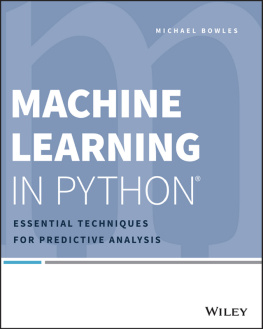






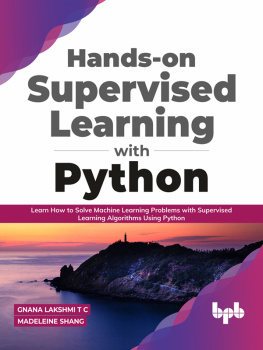
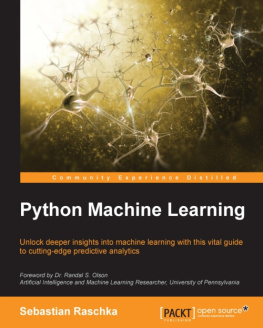
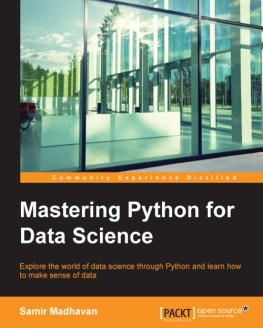
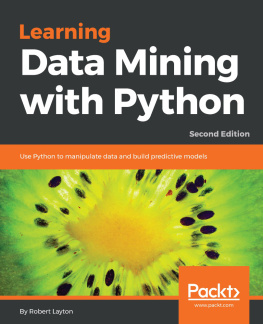

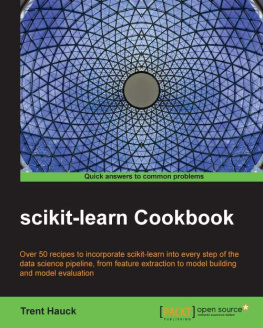
![Frank Kane [Frank Kane] - Hands-On Data Science and Python Machine Learning](/uploads/posts/book/119615/thumbs/frank-kane-frank-kane-hands-on-data-science-and.jpg)
